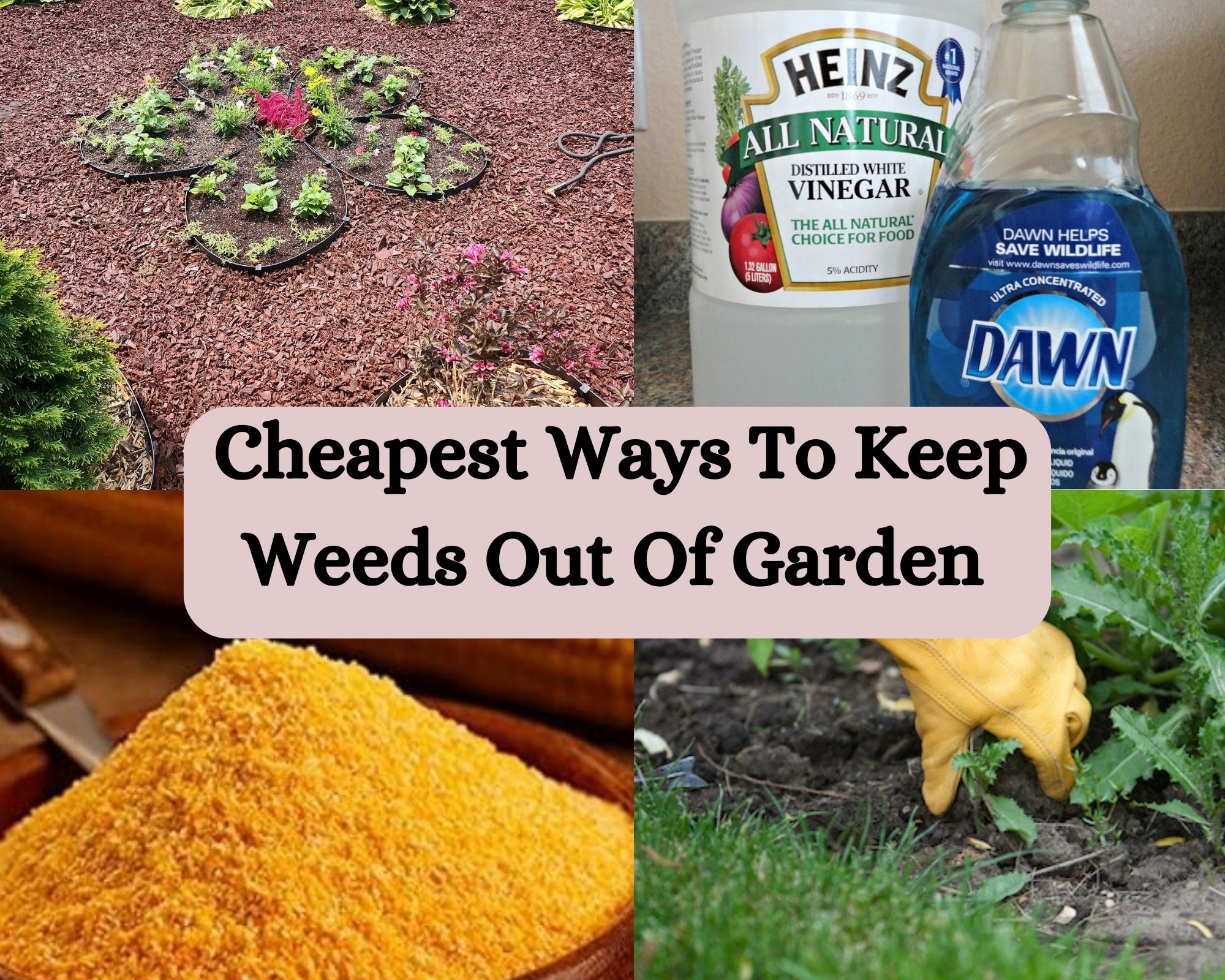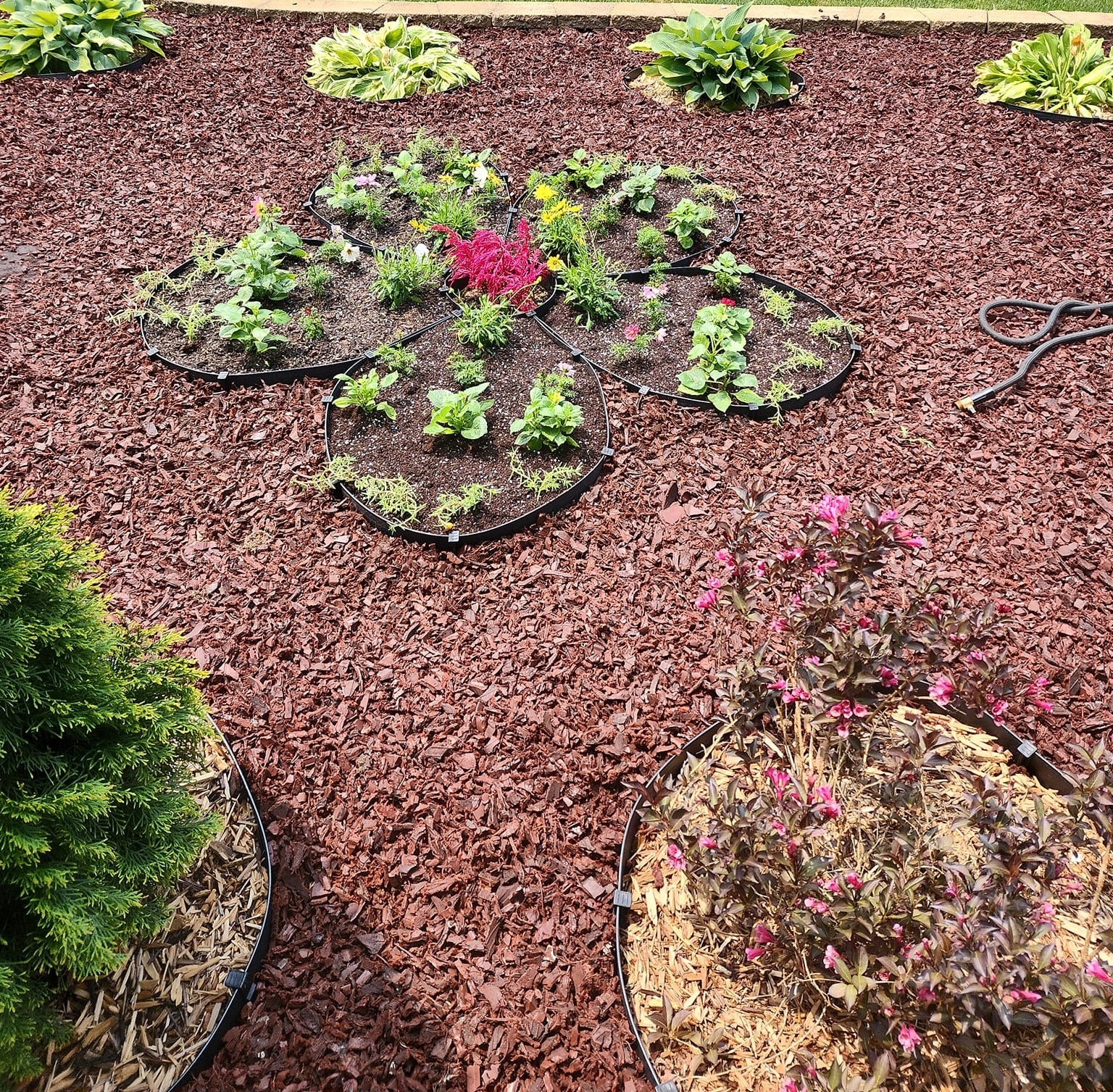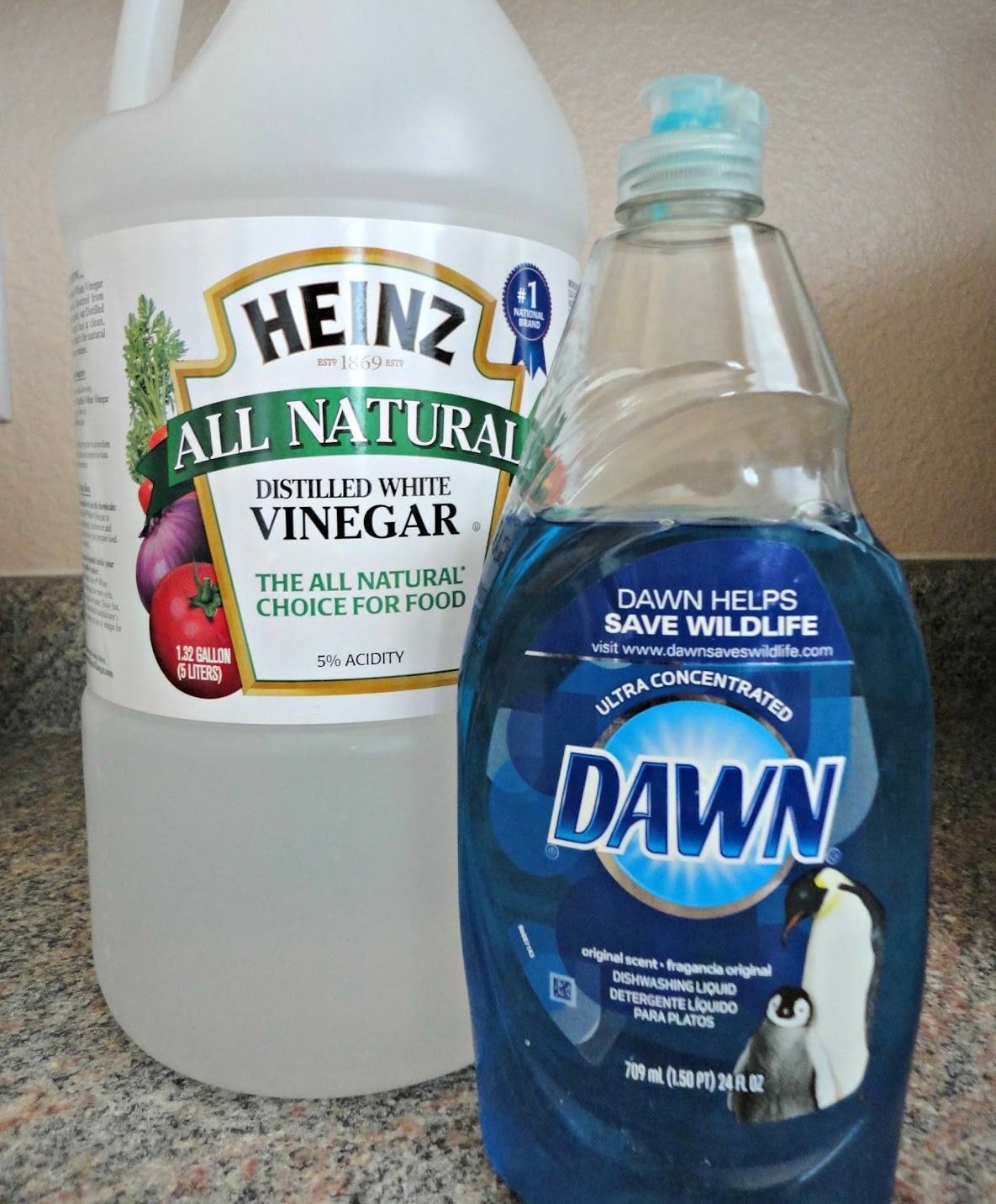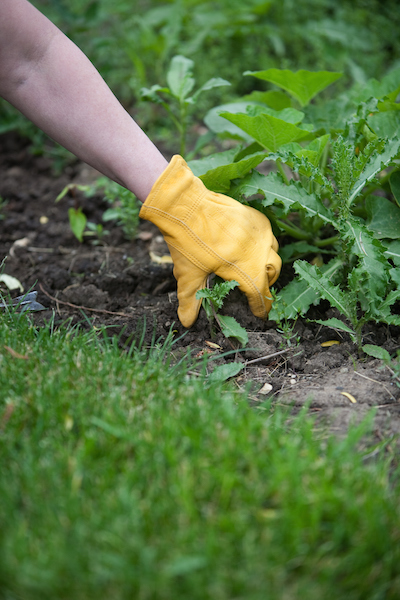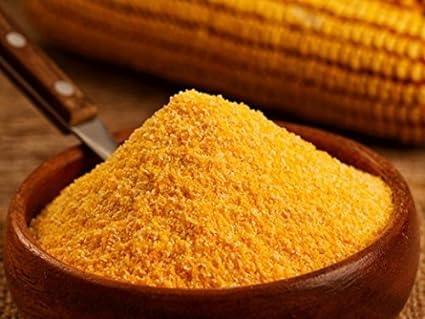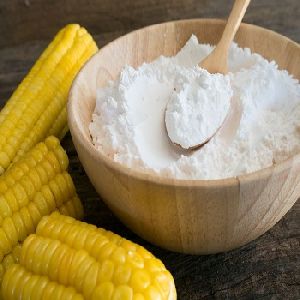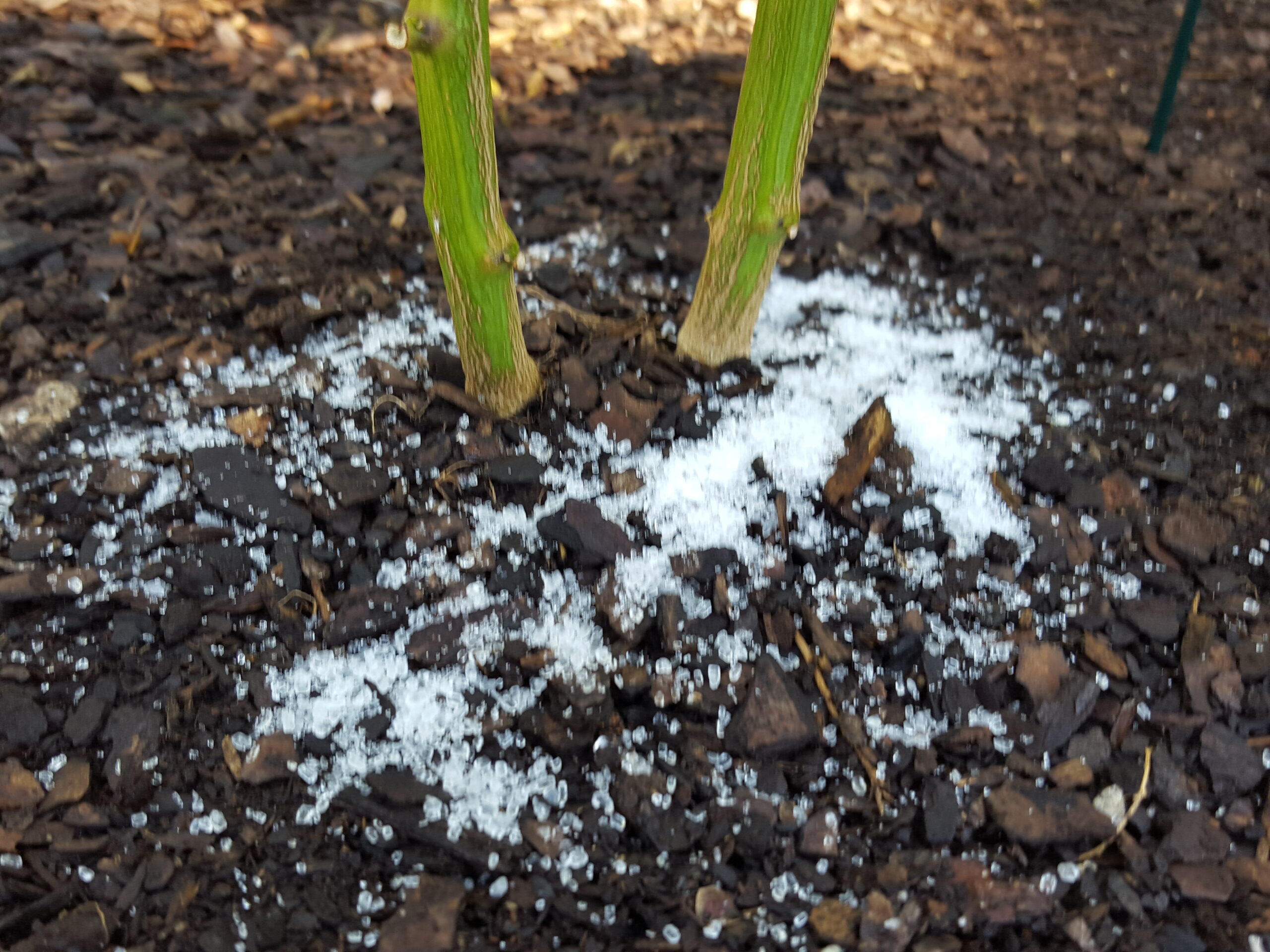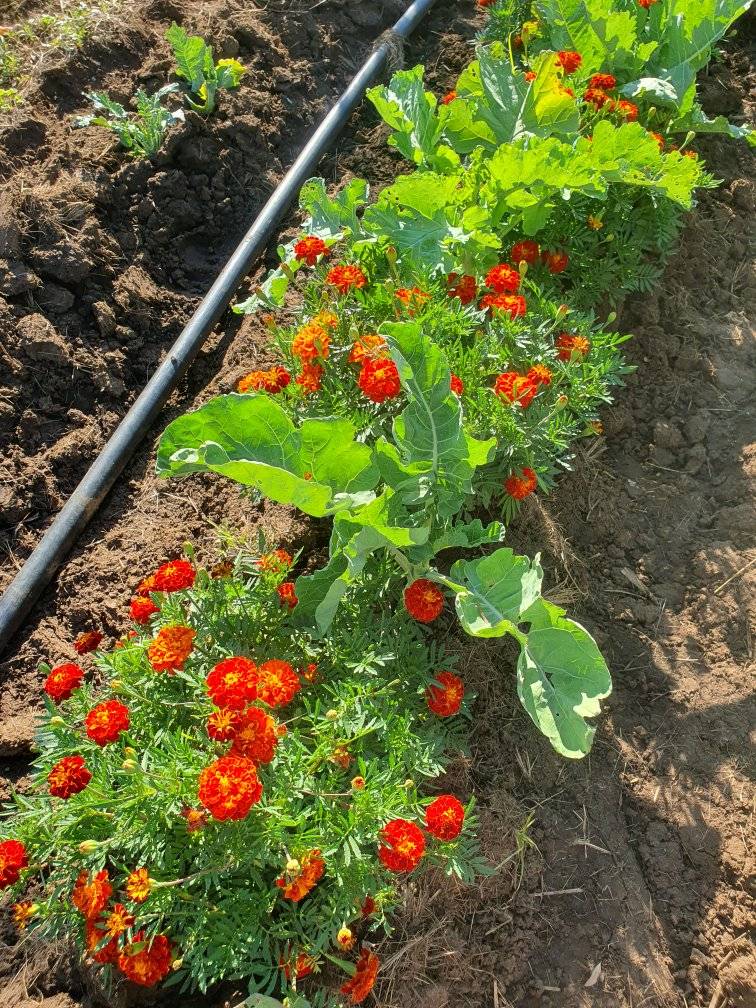How much do you spend weeding your garden? Has this become an endless, annoying task? I understand the struggle. Weeds contend with other plants for nutrients, space, sunlight, and water, threatening their health and productivity.
Besides choking the life out of your plants, weeds also harbor diseases and pests. Fortunately, you can successfully combat this mortal enemy and give your plants the best chance of flourishing. That’s not all; this endeavor doesn’t have to cost much.
Below is a thrifty guide to keeping weeds out of your garden.
9 Cheapest Ways To Keep Weeds Out Of Garden
1. Mulch Your Garden to Control Weeds
Top of our list is a tried-and-true technique that effectively keeps weeds at bay. However, that is not all; mulch also nurtures your garden’s overall health. Mulching is simple, cost-effective, and eco-friendly.
Lay down mulch in your garden to suffocate weeds. The mulch layer will shade the soil, making it difficult for existing weeds to receive the sunlight they need to thrive. Moreover, the weed seeds will not reach the soil and germinate.
Besides preventing weeds, mulching also offers the benefits below.
- Mulch reduces evaporation, thus helping the soil retain moisture, which in turn ensures your plants have a consistent water supply.
- Mulch regulates soil temperature- during hot months, your garden soil will stay cool, and vice versa during cold months. This stability promotes optimal conditions for plant growth while hindering weed development.
Choose your mulch wisely, though, and replenish it as it decomposes. The options include straw, leaves, stones, newspaper, compost, rubber chips, and grass clippings.
Do not underestimate or disregard newspapers and cardboard in your fight against weeds because they make excellent weed suppressors. By laying them on your plants, the physical barrier created deprives the soil of sunlight, hindering weed germination.
Before mulching, weed your garden thoroughly to prevent existing weeds from growing through the mulch layer. Keep the mulch layer to 2-4 inches thick, and make sure it doesn’t touch the stems of your plants to prevent potential issues like rot.
Read More:
- How To Start A Garden For Beginners Step By Step
- 9 Flowers That Shouldn’t Be Planted Near A Vegetable Garden
2. Make DIY Herbicides
There are many household items you can use to prepare effective-budget-friendly herbicides. Some powerful alternatives to commercial herbicides include:
- Vinegar and dish soap solution
- Citrus-based herbicide
- Borax
Apply your DIY herbicide on a sunny day for better absorption by the weeds. Avoid windy days to prevent the solution from drifting onto desirable plants. Spray the weed leaves because it is where the absorption takes place, and reapply it as necessary.
Adjust the DIY herbicide’s concentration to find the right balance between effectiveness and minimizing the impact on surrounding plants. Also, for your safety, wear gloves and protective eyewear when handling and applying DIY herbicides.
Be cautious when using DIY herbicides like vinegar because they can harm desired plants.
3. Use Boiling Water
This common household resource is surprisingly an economical and effective weed controller. This method requires minimal investment and poses no risk to the environment. So, go ahead and kill the weeds in your garden by scalding and damaging their cellular structure, preventing further growth.
Boil water, then pour it directly into the weeds, but be mindful of nearby desirable plants, as boiling water can affect them. For precision, use a watering can or a heat-resistant jug to pour boiling water directly onto the leaves of the weeds. Apply this treatment on a sunny day to enhance its effectiveness.
Boiling water delivers great results against weeds growing in cracks between pavers or in small, confined spaces.
4. Try Vodka
This is a surprising addition to unconventional weed elimination methods in your garden. I absolutely understand if you are unwilling to spare some of your vodka to kill weeds. However, if you do, vodka is effective, eco-friendly, and cost-efficient.
Vodka is a desiccant, so it robs weeds of moisture and causes them to dehydrate. This dehydration process disrupts the cellular structure of the weeds, effectively killing them. Its high alcohol content also contributes to its effectiveness in killing weeds as the alcohol disrupts the protective outer layer of plant cells, letting the liquid into the weed’s tissues.
5. Hand Pull the Weeds in Your Garden
Pulling the weeds by hand may not be glamorous, but it remains one of the most effective and cost-free ways to control weeds in your garden. By taking time to pull out the weeds in your garden, you will be able to target weeds with precision, ensuring you remove them at the root.
This method helps disrupt the weeds’ life cycle, thus preventing weed seeds’ formation and dispersal. Aside from allowing you to eliminate the weeds, it also offers a way to closely monitor your garden, promptly identifying and addressing potential issues.
Hand weeding is best done after rain or watering your garden when the soil is still moist. This will make it easier to pull out weeds along with their roots. Grasp the weed as close to the soil level as possible, then pull steadily.
However, avoid overly aggressive pulling, especially for delicate plants, and do not disturb the roots of desirable plants.
Although hand weeding requires no tools, I recommend investing in hand tools like a weeding fork or trowel to assist in loosening the soil around the weeds. Moreover, this will make the process more controllable and minimize soil disturbance.
6. Corn Gluten Meal
Use this byproduct of corn milling as a pre-emergent herbicide to keep weeds from germinating and becoming a nuisance in the first place. This sustainable solution is especially effective against annual weeds.
Besides keeping weeds at bay, corn gluten meal contributes nitrogen to the soil, thus acting as a fertilizer for your desirable plants. Application time is vital when using corn gluten meal to control weeds. So, when is the best time?
Apply corn gluten meal at the beginning of spring before the weeds germinate. Also, consider a second application in late summer for warm-season weeds.
The application entails evenly spreading corn gluten meal over the soil surface with a broadcast spreader. Next, water the area immediately to activate its herbicidal properties.
7. Cornstarch
If you sprinkle cornstarch over your garden soil, you will create a thin layer that prevents weed growth by keeping sunlight from the soil surface. Consider this method particularly useful for your vegetable garden and flower beds.
Cornstarch won’t harm beneficial insects or soil microorganisms. It works marvelously against small and emerging weeds but is best combined with other methods for larger or well-established weeds.
8. Sprinkle Salt
Salt is inexpensive, readily available, and effective against weeds. However, this method comes with significant caveats and some drawbacks. Therefore, if you consider dehydrating the weeds in your garden with salt, beware of the potential risks.
These downsides are:
a) Soil Damage
Using salt frequently will result in accumulation in the soil, which then leads to soil salinity. This can harm the soil structure, rendering it less conducive for planting. Most plants, including desirable ones, are sensitive to high salt levels in the soil.
b) Environmental Impact
Excessive use of salt in the garden can negatively impact the surrounding environment. Runoff from treated places can contaminate water sources.
c) Impact on Desirable Plants
Salt can detrimentally impact the growth of nearby plants, including those you want to keep in your garden. For this reason, apply salt selectively and avoid contact with desirable vegetation.
So, how do you safely use salt to kill weeds without hurting your plants, the environment, or the soil? Here are some helpful tips.
- Use salt sparingly, concentrating on areas where weeds are a significant problem, and avoid applying it near desirable plants.
- Dissolve the salt in water before application to help distribute the salt more evenly and reduce the risk of overapplication.
- Apply salt directly to the base of the weeds, avoiding contact with the soil around desirable plants.
- Regularly monitor the impact of salt on the weeds and the surrounding vegetation. If you observe any adverse effects on desirable plants, consider alternative methods.
9. Companion Planting
Harness the weed-repelling qualities of some plants by planting them together with your desirable plants. This age-old practice is based on the idea that some plants can benefit each other when grown together.
Examples of plants that deter weeds include:
- Groundcovers- these include creeping thyme, periwinkle, sedum, and creeping jenny.
- Peppermint and spearmint- they release aromatic compounds that inhibit weed growth.
- Rosemary- it has allelopathic properties that inhibit weed growth.
- Garlic- Garlic releases sulfur compounds that can inhibit weed growth.
- Nasturtiums- they produce chemicals that act as natural herbicides, inhibiting weed germination.
- Sunflowers- tall sunflowers can provide shade to the soil, reducing sunlight available for weed germination. Their extensive root system also helps compete with weeds for nutrients.
- Clover- white clover is a nitrogen-fixing cover crop that can suppress weeds while enriching the soil.
- Buckwheat- this plant grows quickly, shading out weeds and improving soil structure.
- Barley- this cover crop can smother weeds and enhance soil structure.
Conclusion
Chemicals and expensive solutions do not have to come into play for you to keep a weed-free garden. You can experiment with different cheap techniques like hand weeding and mulching to find the combination that works best for your specific plants, soil, and climate. Regardless of the method you pick, always be mindful of the potential impact on desirable plants and the environment.

Hey there, fellow plant enthusiasts! I’m Rachel, the green-thumbed writer behind Rooted In Garden. With a deep-rooted love for all things botanical, I’ve made it my mission to help you cultivate a thriving collection of houseplants. As a devoted plant parent myself, I understand the joys and challenges that come with nurturing these leafy wonders. Whether you’re a succulent aficionado, an orchid enthusiast, or simply adore all potted flora, join me on this journey as we explore the secrets to growing and caring for our beloved green companions. Together, let’s create a flourishing oasis indoors.

